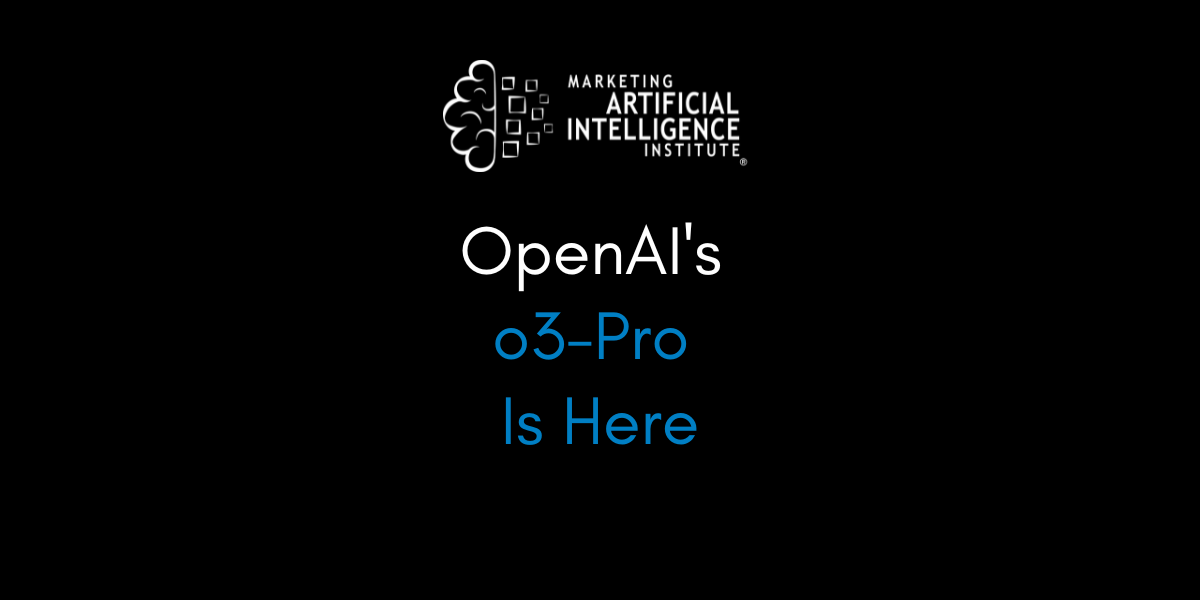A Duet of Performance and Safety(1750304501868200)
A Duet of Performance and Safety: Technical Analysis of Modern Web Frameworks As a third-year computer science student immersed in the world of computer science, my days are consumed by the logic of code and the allure of algorithms. However, while the ocean of theory is vast, it's the crashing waves of practice that truly test the truth. After participating in several campus projects and contributing to some open-source communities, I've increasingly felt that choosing the right development framework is crucial for a project's success, development efficiency, and ultimately, the user experience. Recently, a web backend framework built on the Rust language, with its earth-shattering performance and unique design philosophy, completely overturned my understanding of "efficient" and "modern" web development. Today, as an explorer, combining my "ten-year veteran editor's" pickiness with words and a "ten-year veteran developer's" exacting standards for technology, I want to share my in-depth experience with this "next-generation web engine" and its awe-inspiring path to performance supremacy. Framework Architecture and Design Philosophy Core Architecture Overview The framework's architecture is built upon several key principles that distinguish it from traditional web frameworks: Zero-Copy Design: Minimizes memory allocations and copying operations Async-First Architecture: Built on Tokio runtime for optimal concurrency Type-Safe Abstractions: Leverages Rust's type system for compile-time guarantees Modular Middleware System: Flexible request/response processing pipeline Basic Server Setup use hyperlane::*; #[tokio::main] async fn main() { let server = Server::new(); server.host("127.0.0.1").await; server.port(8080).await; server.route("/", hello_world).await; server.run().await.unwrap(); } #[get] async fn hello_world(ctx: Context) { ctx.set_response_status_code(200) .await .set_response_body("Hello, World!") .await; } Advanced Routing System The framework supports both static and dynamic routing with regex capabilities: // Static routing server.route("/api/users", get_users).await; // Dynamic routing with parameter extraction server.route("/api/users/{id}", get_user_by_id).await; // Regex-based routing for validation server.route("/api/users/{id:\\d+}", get_user_by_id).await; server.route("/files/{path:^.*$}", serve_file).await; async fn get_user_by_id(ctx: Context) { let user_id = ctx.get_route_param("id").await; let user = find_user_by_id(user_id).await; ctx.set_response_body_json(&user).await; } Middleware System Architecture Request/Response Middleware Pattern The framework implements a sophisticated middleware system that allows for cross-cutting concerns: async fn auth_middleware(ctx: Context) { let token = ctx.get_request_header("authorization").await; if let Some(token) = token { if validate_token(&token).await { return; // Continue processing } } // Authentication failed ctx.set_response_status_code(401) .await .set_response_body("Unauthorized") .await; } async fn logging_middleware(ctx: Context) { let start_time = std::time::Instant::now(); let method = ctx.get_request_method().await; let path = ctx.get_request_path().await; // Process request... let duration = start_time.elapsed(); println!("{} {} - {}ms", method, path, duration.as_millis()); } // Register middleware server.request_middleware(auth_middleware).await; server.response_middleware(logging_middleware).await; CORS Middleware Implementation pub async fn cross_middleware(ctx: Context) { ctx.set_response_header(ACCESS_CONTROL_ALLOW_ORIGIN, ANY) .await .set_response_header(ACCESS_CONTROL_ALLOW_METHODS, ALL_METHODS) .await .set_response_header(ACCESS_CONTROL_ALLOW_HEADERS, ANY) .await; } Timeout Middleware Pattern async fn timeout_middleware(ctx: Context) { spawn(async move { timeout(Duration::from_millis(100), async move { ctx.aborted().await; ctx.set_response_status_code(200) .await .set_response_body("timeout") .unwrap(); }) .await .unwrap(); }); } Real-Time Communication Capabilities WebSocket Implementation The framework provides native WebSocket support with automatic protocol upgrade: #[ws] #[get] async fn websocket_handler(ctx: Context) { loop { let message = ctx.get_request_body().await; let response = process_message(&message).await; let _ = ctx.set_response_body(response).await.send_body().await; } } // Client-side JavaScript const ws = new WebSocket('ws://localhost:60000/websocket'); ws.onopen = () => {

A Duet of Performance and Safety: Technical Analysis of Modern Web Frameworks
As a third-year computer science student immersed in the world of computer science, my days are consumed by the logic of code and the allure of algorithms. However, while the ocean of theory is vast, it's the crashing waves of practice that truly test the truth. After participating in several campus projects and contributing to some open-source communities, I've increasingly felt that choosing the right development framework is crucial for a project's success, development efficiency, and ultimately, the user experience. Recently, a web backend framework built on the Rust language, with its earth-shattering performance and unique design philosophy, completely overturned my understanding of "efficient" and "modern" web development. Today, as an explorer, combining my "ten-year veteran editor's" pickiness with words and a "ten-year veteran developer's" exacting standards for technology, I want to share my in-depth experience with this "next-generation web engine" and its awe-inspiring path to performance supremacy.
Framework Architecture and Design Philosophy
Core Architecture Overview
The framework's architecture is built upon several key principles that distinguish it from traditional web frameworks:
- Zero-Copy Design: Minimizes memory allocations and copying operations
- Async-First Architecture: Built on Tokio runtime for optimal concurrency
- Type-Safe Abstractions: Leverages Rust's type system for compile-time guarantees
- Modular Middleware System: Flexible request/response processing pipeline
Basic Server Setup
use hyperlane::*;
#[tokio::main]
async fn main() {
let server = Server::new();
server.host("127.0.0.1").await;
server.port(8080).await;
server.route("/", hello_world).await;
server.run().await.unwrap();
}
#[get]
async fn hello_world(ctx: Context) {
ctx.set_response_status_code(200)
.await
.set_response_body("Hello, World!")
.await;
}
Advanced Routing System
The framework supports both static and dynamic routing with regex capabilities:
// Static routing
server.route("/api/users", get_users).await;
// Dynamic routing with parameter extraction
server.route("/api/users/{id}", get_user_by_id).await;
// Regex-based routing for validation
server.route("/api/users/{id:\\d+}", get_user_by_id).await;
server.route("/files/{path:^.*$}", serve_file).await;
async fn get_user_by_id(ctx: Context) {
let user_id = ctx.get_route_param("id").await;
let user = find_user_by_id(user_id).await;
ctx.set_response_body_json(&user).await;
}
Middleware System Architecture
Request/Response Middleware Pattern
The framework implements a sophisticated middleware system that allows for cross-cutting concerns:
async fn auth_middleware(ctx: Context) {
let token = ctx.get_request_header("authorization").await;
if let Some(token) = token {
if validate_token(&token).await {
return; // Continue processing
}
}
// Authentication failed
ctx.set_response_status_code(401)
.await
.set_response_body("Unauthorized")
.await;
}
async fn logging_middleware(ctx: Context) {
let start_time = std::time::Instant::now();
let method = ctx.get_request_method().await;
let path = ctx.get_request_path().await;
// Process request...
let duration = start_time.elapsed();
println!("{} {} - {}ms", method, path, duration.as_millis());
}
// Register middleware
server.request_middleware(auth_middleware).await;
server.response_middleware(logging_middleware).await;
CORS Middleware Implementation
pub async fn cross_middleware(ctx: Context) {
ctx.set_response_header(ACCESS_CONTROL_ALLOW_ORIGIN, ANY)
.await
.set_response_header(ACCESS_CONTROL_ALLOW_METHODS, ALL_METHODS)
.await
.set_response_header(ACCESS_CONTROL_ALLOW_HEADERS, ANY)
.await;
}
Timeout Middleware Pattern
async fn timeout_middleware(ctx: Context) {
spawn(async move {
timeout(Duration::from_millis(100), async move {
ctx.aborted().await;
ctx.set_response_status_code(200)
.await
.set_response_body("timeout")
.unwrap();
})
.await
.unwrap();
});
}
Real-Time Communication Capabilities
WebSocket Implementation
The framework provides native WebSocket support with automatic protocol upgrade:
#[ws]
#[get]
async fn websocket_handler(ctx: Context) {
loop {
let message = ctx.get_request_body().await;
let response = process_message(&message).await;
let _ = ctx.set_response_body(response).await.send_body().await;
}
}
// Client-side JavaScript
const ws = new WebSocket('ws://localhost:60000/websocket');
ws.onopen = () => {
console.log('WebSocket opened');
setInterval(() => {
ws.send(`Now time: ${new Date().toISOString()}`);
}, 1000);
};
ws.onmessage = (event) => {
console.log('Receive: ', event.data);
};
Server-Sent Events (SSE) Implementation
pub async fn sse_handler(ctx: Context) {
let _ = ctx
.set_response_header(CONTENT_TYPE, TEXT_EVENT_STREAM)
.await
.set_response_status_code(200)
.await
.send()
.await;
for i in 0..10 {
let _ = ctx
.set_response_body(format!("data:{}{}", i, HTTP_DOUBLE_BR))
.await
.send_body()
.await;
sleep(Duration::from_secs(1)).await;
}
let _ = ctx.closed().await;
}
Performance Analysis and Benchmarks
Benchmark Results
Performance testing using wrk with 360 concurrent connections for 60 seconds:
| Framework | QPS | Memory Usage | Startup Time |
|---|---|---|---|
| Tokio (Raw) | 340,130.92 | Low | < 1s |
| This Framework | 324,323.71 | Low | < 1s |
| Rocket | 298,945.31 | Medium | 2-3s |
| Rust Standard Library | 291,218.96 | Low | < 1s |
| Gin (Go) | 242,570.16 | Medium | < 1s |
| Go Standard Library | 234,178.93 | Low | < 1s |
| Node.js Standard Library | 139,412.13 | High | < 1s |
Memory Management Optimizations
// Zero-copy string handling
ctx.set_response_body("Hello World").await;
// Efficient JSON serialization
ctx.set_response_body_json(&data).await;
// Smart memory allocation
let response = format!("User: {}", user.name);
ctx.set_response_body(response).await;
Framework Comparison Analysis
Comparison with Express.js
| Aspect | Express.js | This Framework |
|---|---|---|
| Performance | ~139K QPS | ~324K QPS |
| Type Safety | Runtime | Compile-time |
| Memory Safety | Manual | Automatic |
| Async Model | Callback/Promise | Native async/await |
| Error Handling | Try-catch | Result types |
Comparison with Spring Boot
| Aspect | Spring Boot | This Framework |
|---|---|---|
| Startup Time | 30-60 seconds | < 1 second |
| Memory Usage | 100-200MB | 10-20MB |
| Learning Curve | Steep | Moderate |
| Deployment | JAR + JVM | Single binary |
| Hot Reload | Limited | Full support |
Comparison with Actix-web
| Aspect | Actix-web | This Framework |
|---|---|---|
| Dependencies | High | Low |
| API Design | Actor-based | Direct |
| Middleware | Complex | Simple |
| WebSocket | Plugin required | Native |
| SSE Support | Limited | Full |
Technical Deep Dive: Async Runtime Integration
Tokio Integration
The framework deeply integrates with Tokio's async runtime:
use tokio::time::{sleep, Duration};
async fn async_operation(ctx: Context) {
// Non-blocking I/O operations
let result = database_query().await;
// Concurrent task execution
let (user_result, product_result) = tokio::join!(
fetch_user_data(),
fetch_product_data()
);
// Timeout handling
match tokio::time::timeout(Duration::from_secs(5), slow_operation()).await {
Ok(result) => {
ctx.set_response_body_json(&result).await;
}
Err(_) => {
ctx.set_response_status_code(408).await;
}
}
}
Error Handling Patterns
async fn robust_handler(ctx: Context) -> Result<(), Box<dyn std::error::Error>> {
let data: UserData = ctx.get_request_body_json().await?;
match process_data(data).await {
Ok(result) => {
ctx.set_response_body_json(&result).await;
Ok(())
}
Err(e) => {
ctx.set_response_status_code(500)
.await
.set_response_body(format!("Error: {}", e))
.await;
Ok(())
}
}
}
Security Considerations
Input Validation
async fn secure_handler(ctx: Context) {
// Parameter validation
let user_id = ctx.get_route_param("id").await;
if !user_id.chars().all(char::is_numeric) {
ctx.set_response_status_code(400).await;
return;
}
// SQL injection prevention through parameterized queries
let user = sqlx::query_as!(
User,
"SELECT * FROM users WHERE id = $1",
user_id
)
.fetch_one(pool)
.await?;
ctx.set_response_body_json(&user).await;
}
CORS and Security Headers
async fn security_middleware(ctx: Context) {
// CORS headers
ctx.set_response_header(ACCESS_CONTROL_ALLOW_ORIGIN, "https://trusted-domain.com")
.await;
// Security headers
ctx.set_response_header("X-Content-Type-Options", "nosniff")
.await
.set_response_header("X-Frame-Options", "DENY")
.await
.set_response_header("X-XSS-Protection", "1; mode=block")
.await;
}
Database Integration Patterns
Connection Pool Management
use sqlx::PgPool;
async fn database_handler(ctx: Context) {
let pool = ctx.get_data::<PgPool>().await;
let user_id = ctx.get_route_param("id").await;
// Efficient connection reuse
let user = sqlx::query_as!(
User,
"SELECT * FROM users WHERE id = $1",
user_id
)
.fetch_one(pool)
.await?;
ctx.set_response_body_json(&user).await;
}
Conclusion: Technical Excellence Through Design
This framework demonstrates how thoughtful architecture can achieve both performance and developer experience. Its key strengths lie in:
- Zero-copy optimizations that minimize memory overhead
- Native async support that maximizes concurrency
- Type-safe abstractions that prevent runtime errors
- Modular design that promotes code reusability
The framework's performance characteristics make it suitable for high-throughput applications, while its developer-friendly API makes it accessible to teams of varying experience levels. The combination of Rust's safety guarantees with modern async patterns creates a compelling foundation for building reliable web services.
For more information, please visit Hyperlane's GitHub page or contact the author: root@ltpp.vip.












































































































































































![[The AI Show Episode 153]: OpenAI Releases o3-Pro, Disney Sues Midjourney, Altman: “Gentle Singularity” Is Here, AI and Jobs & News Sites Getting Crushed by AI Search](https://www.marketingaiinstitute.com/hubfs/ep%20153%20cover.png)































































































































































































![GrandChase tier list of the best characters available [June 2025]](https://media.pocketgamer.com/artwork/na-33057-1637756796/grandchase-ios-android-3rd-anniversary.jpg?#)



































































_Brain_light_Alamy.jpg?width=1280&auto=webp&quality=80&disable=upscale#)


















































![[Fixed] How to Recover Unsaved Word Document on Windows 10/11](https://www.pcworld.com/wp-content/uploads/2025/06/How-to-recover-unsaved-word-document-main.png?#)































































![Apple's F1 Camera Rig Revealed [Video]](https://www.iclarified.com/images/news/97651/97651/97651-640.jpg)

![Apple Shares New Apple Arcade Ad: 'Hold That Train!' [Video]](https://www.iclarified.com/images/news/97653/97653/97653-640.jpg)








































































